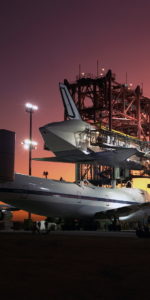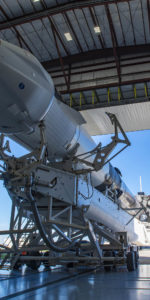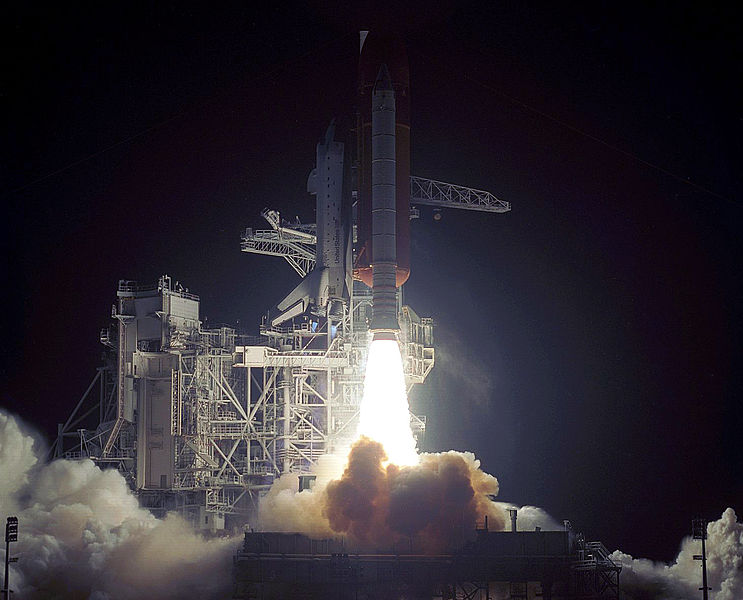
When Challenger was lost on 28 January 1986, a tight-knit team of astronauts knew that their own wait for space would be a correspondingly long one. Under an alternate history, STS-61E would have been the next shuttle flight after Challenger, targeted to launch the following 6 March to observe Halley’s Comet and explore the Universe with a powerful battery of three ultraviolet telescopes, known as “ASTRO-1”.
Sadly, it was not to be, and in the aftermath of the disaster ASTRO-1 found itself remanifested as STS-35 and rescheduled to fly in mid-1990. But the road to space remained fraught with difficulty and even when Columbia finally blasted off on 2 December 1990—30 years ago, tonight—it was apparent that the gremlins of misfortune were not yet done with her.
In its original incarnation, ASTRO-1 comprised three ultraviolet telescopes: the Johns Hopkins University’s Hopkins Ultraviolet Telescope (HUT), the University of Wisconsin at Madison’s Wisconsin Ultraviolet Photopolarimeter Experiment (WUPPE) and the Ultraviolet Imaging Telescope (UIT), built by NASA’s Goddard Space Flight Center (GSFC) in Greenbelt, Md.
A wide-field camera, intended to observe Halley’s Comet in 1986, was deleted after Challenger and replaced by another payload, the Broad Band X-Ray Telescope (BBXRT), to observe Supernova 1987A in the Large Magellanic Cloud. The BBXRT was intended for another mission—the Shuttle High Energy Astrophysics Laboratory (SHEAL)—but its fabrication was completed ahead of schedule and it was added to ASTRO-1.
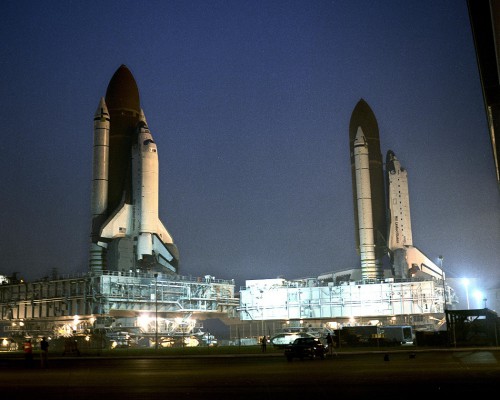
But as outlined in a previous AmericaSpace article, STS-35 found itself hamstrung throughout the summer of 1990 by a seemingly intractable series of hydrogen leaks. The issue centered upon the 17-inch (43 cm) disconnect fitting in Columbia’s belly, part of the mechanism responsible for transferring liquid oxygen and hydrogen propellants from the External Tank (ET) into the combustion chambers of the three Space Shuttle Main Engines (SSMEs).
After months of agonizing repairs, rollouts and rollbacks to and from the launch pad—including an impressive “photo opportunity” with sister Atlantis on 8-9 August 1990—and frustrating leak checks, by the end of November Columbia finally looked set to go. As she sat on historic Pad 39B at the Kennedy Space Center (KSC) in Florida, only the menace of a tropical storm lingering near Cuba stood in her way.
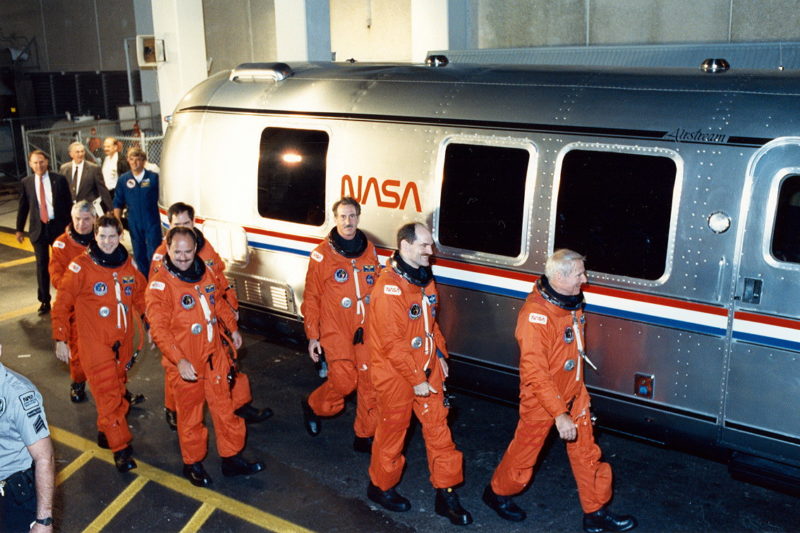
The seven-man crew of STS-35—Commander Vance Brand, Pilot Guy Gardner, Mission Specialists Jeff Hoffman, Mike Lounge and Bob Parker and Payload Specialists Sam Durrance and Ron Parise—“breakfasted” late on the night of 1 December, before donning their orange pressure suits for launch. At the Pad 39B white room, as he awaited his turn to board the orbiter, Gardner could not resist mugging for the camera: hand-combing his limited amount of hair and tidying his moustache and eyebrows.
But in Hoffman’s mind, the fact that ASTRO-1 no longer had a comet on its list of observations was a positive sign that the snakebitten flight was finally ready to. “We all know comets are harbingers of bad news,” he said before launch. “This time, we have no comet. So we’re going to go.”
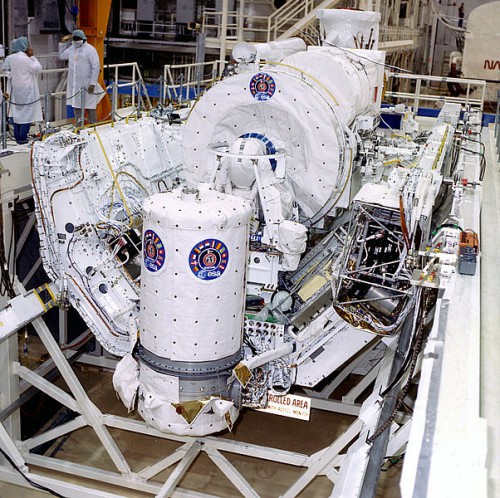
In the final minutes before liftoff, the Launch Control Center (LCC) wished the astronauts good luck. Brand expressed his thanks. “Visors are down and we’ll see ya later.”
And go they did. At 1:49 a.m. EST on 2 December 1990, Columbia turned night into day across a sleeping Florida, her blazing ascent lighting up much of the United States’ eastern seaboard. Admittedly, launch had been delayed by 21 minutes, due to concerns about clouds below the “ceiling” necessary to monitor the first two minutes of flight, but the STS-35 ascent was entirely nominal. As the shuttle pierced a cloud deck at about 7,000 feet (2,100 meters), it afforded spectators on the ground a beautiful view. “It was really spectacular,” remembered Pilot Guy Gardner, “to look out the windows and see that approach.”
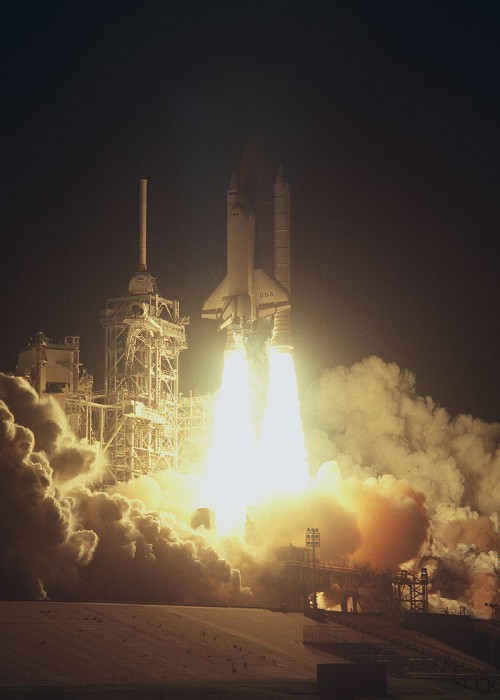
On the flight deck, Hoffman would never forget the awe-inspiring sensation of blasting off at night. As the vehicle ascended from the pad, cleared the launch tower and began a computer-controlled “Roll Program” maneuver to establish itself on the proper azimuth for a 28.45-degree-inclination orbit, he remembered looking back over his shoulder through the overhead windows to see the ground literally glow at the instant of Solid Rocket Booster (SRB) ignition at T-0.
Later, when the boosters burned out and were jettisoned, Hoffman and the other three men on the flight deck—Gardner, Brand and Lounge—were astonished as the entire cockpit was eerily bathed in light.
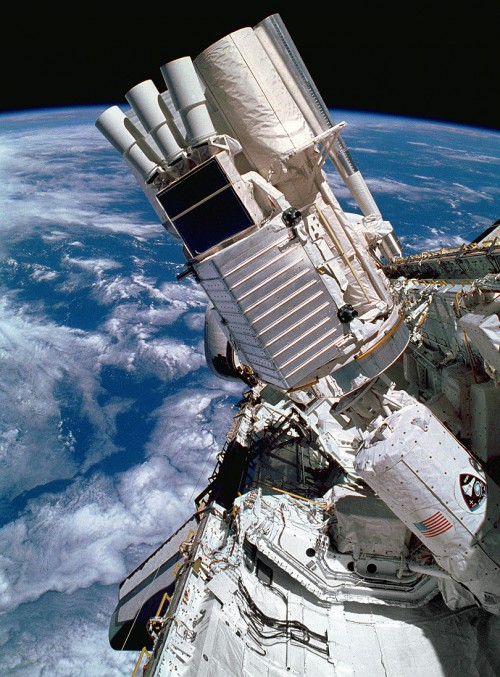
Even though this was his fourth mission, STS-35 was one to savor for Brand, since it was his first at night. “You had the feeling you were lighting up all that part of Florida,” he told the NASA oral historian. “It was like night flying in an airplane. You had to really have your lights adjusted and pay attention to your gauges. You couldn’t really tell much about what was going on outside. You couldn’t see the horizon very well.”
The night launch oriented Columbia to ensure that her passage through the South Atlantic Anomaly (SAA)—where the Van Allen radiation belt “dips” toward the ionosphere—occurred mainly during orbital daytime. High-energy particles were already known to adversely affect instrument performance and increased “background” levels in sensitive scientific detectors. Since this natural background, which consists of scattered light and ultraviolet atmospheric airglow emissions, was also higher on the daylit portion of each orbit, it preserved the nighttime passes for ASTRO-1 to focus on its faint celestial targets.
Observation of those targets began crisply and activation of ASTRO-1 started shortly after Columbia reached space. With two 12-hour shifts (a “red” team and a “blue” team) working around the clock, STS-35 was tasked with ten full days of science.
Unfortunately, the mission’s misfortunes continued in orbit, with display unit failures and problems with the telescopes’ pointing system. Bad weather at the landing site also conspired to a decision to bring the shuttle home after nine days. But in spite of these difficulties, the mission proved a remarkable success, so much so that in May 1991 an ASTRO-2 flight was approved by NASA and the telescopes flew again in March 1995.




